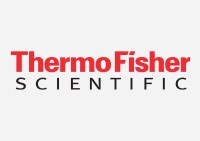Search Thermo Fisher Scientific

Antibiotics
Browse through our catalog of antibiotics, essential compounds used to kill bacteria, slow bacterial growth, and prevent contamination in various applications. Antibiotics encompass a wide range of substances, including penicillins, cephalosporins, aminoglycosides, and fluoroquinolones. These products are available in different formulations such as powders, liquids, and solutions, catering to diverse research needs including contamination protection, and antibiotic susceptibility testing.Antibiotics in this collection include common types like ampicillin, amoxicillin, gentamicin, and streptomycin, as well as specialized compounds like actinomycin D and bleomycin sulfate. Many are available in various salt forms, such as sodium or hydrochloride, and in different hydration states. The catalog also features antibiotic mixtures and selection reagents like hygromycin B and zeocin. Some antibiotics, like cycloheximide, are used to inhibit protein synthesis in eukaryotic cells. The collection includes both broad-spectrum antibiotics effective against a wide range of bacteria and narrow-spectrum antibiotics targeting specific bacterial types. Learn more about antibiotics.
Read more
Documents & Support
(5831)













